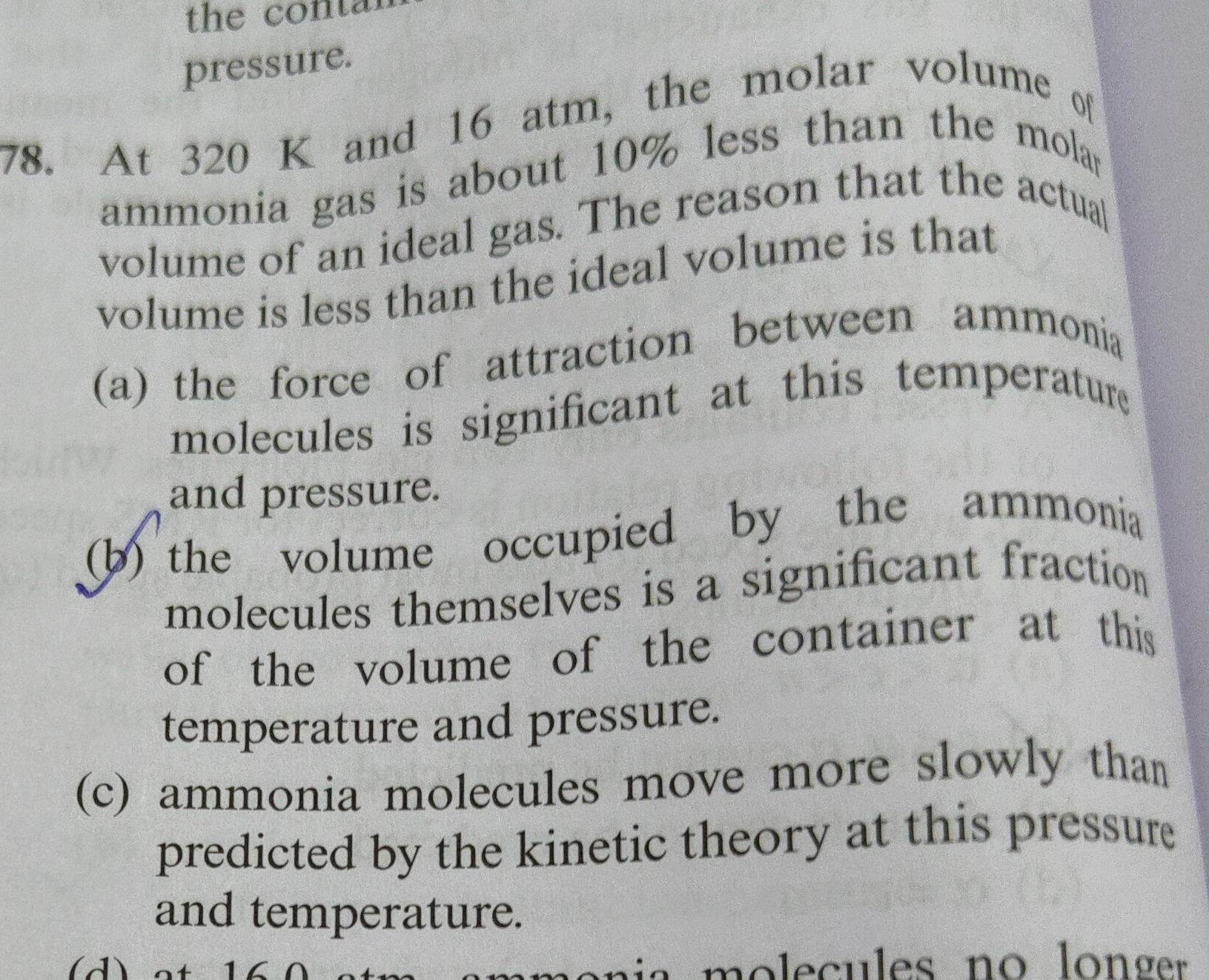Question
Question: At 320 K and 16 atm, the molar volume of ammonia gas is about 10% less than the molar volume of an i...
At 320 K and 16 atm, the molar volume of ammonia gas is about 10% less than the molar volume of an ideal gas. The reason that the actual volume is less than the ideal volume is that

the force of attraction between ammonia molecules is significant at this temperature and pressure.
the volume occupied by the ammonia molecules themselves is a significant fraction of the volume of the container at this temperature and pressure.
ammonia molecules move more slowly than predicted by the kinetic theory at this pressure and temperature.
(a) the force of attraction between ammonia molecules is significant at this temperature and pressure.
Solution
The deviation of real gases from ideal gas behavior is influenced by intermolecular forces and the finite volume of gas molecules.
The van der Waals equation for one mole of gas is: (P+Vm2a)(Vm−b)=RT where Vm2a accounts for attractive forces, and b accounts for molecular volume.
The compressibility factor Z=RTPVm. For an ideal gas, Z=1. For real gases, Z<1 indicates that the actual volume is less than the ideal volume, primarily due to dominant attractive forces. Z>1 indicates that the actual volume is greater than the ideal volume, primarily due to the finite volume of molecules.
At high pressure (16 atm), molecules are close. If attractive forces dominate, the volume is less than ideal (Z<1). If the finite volume of molecules dominates, the volume is greater than ideal (Z>1). Since the actual molar volume is 10% less than ideal, attractive forces are the dominant reason.
